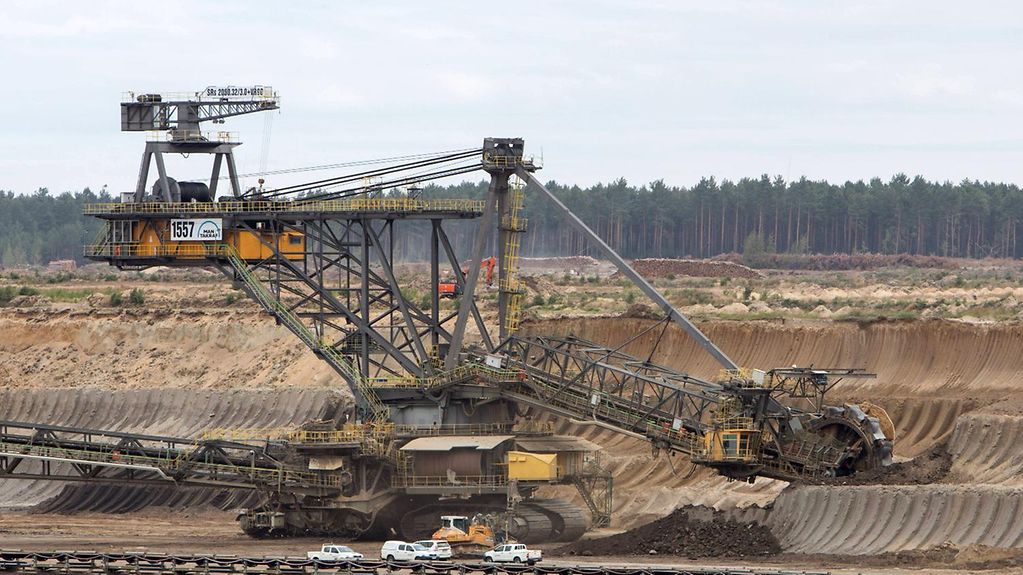Cabinet adopts Structural Development Act (Strukturstärkungsgesetz)
The German government is supporting structural change in coal-mining parts of the country, with up to 40 billion euros available between now and 2038. The aim is to open up new opportunities in these regions for sustainable economic activity with high-quality jobs, as Germany gradually phases out the use of coal.
2 min reading time

A bucket wheel excavator at Jänschwalde opencast lignite mine in Lusatia in the east of Germany
Photo: imago images / Jan Huebner
The Structural Development Act (Strukturstärkungsgesetz) for coal-mining regions provides a binding legal framework for structural-policy support for the affected regions. It guarantees financial assistance for investment and other measures up to 2038. The use of coal should be entirely phased out by then at the latest.
The general public also benefits
The Act is based on the recommendations published this spring by the Commission on Growth, Structural Change and Employment, and the cornerstones identified by the German government on this basis. The main idea is that the affected regions should not bear the full brunt of change alone. After all, everybody throughout the country benefits from phasing out the use of coal, which is so important for climate action and nature conservation.
The lignite mining areas will receive up to 14 billion euros from the federal government by 2038 for specially important investment. The funding is to be split, with 43 per cent earmarked for Lusatia in the east of the country, 37 per cent going to the Rhine mining communities and 20 per cent to mining areas in central Germany. It is up to the federal states to use the funding to invest in economically relevant infrastructure, local public transport, broadband and mobility infrastructure or environmental and landscape conservation. The states must contribute their own share as laid out in the German Basic Law or constitution. Based on the model of EU regional policy, the financial assistance is to be broken down into multi-year promotion periods.
Use of funds will be audited
The federal government is entitled and indeed required to audit the use of funds by the federal states at regular intervals. This applies above all in terms of achieving the main objective: compensating for the loss of value creation and jobs.
In addition, about one billion euros will be available for structurally weak areas that are home to coal-fired power stations and the former lignite mining area in Helmstedt. In addition to Helmstedt, Wilhelmshaven, Unna, Hamm, Herne, Duisburg, Gelsenkirchen, Rostock, Saarlouis and Saarbrücken are eligible for assistance.
Research and assistance programmes planned
Over and above this, the federal government is to invest 26 billion euros in research and other assistance programmes in the affected areas, thus supporting these regions. There are plans to establish federal facilities in the mining areas, which should retain or create up to 5,000 jobs. The transport infrastructure is also to be improved more radically and more swiftly.
Planning to be accelerated
Especially relevant and thus priority projects are to be realised first. These have already been agreed by the federal states in close coordination and consultation with the relevant federal ministries. Steps are also to be taken to speed up planning procedures.
Model regions to be promoted
In addition, the German government will promote lignite mining areas as model regions, with a focus on greenhouse-gas-neutral, resource-efficient and sustainable development.